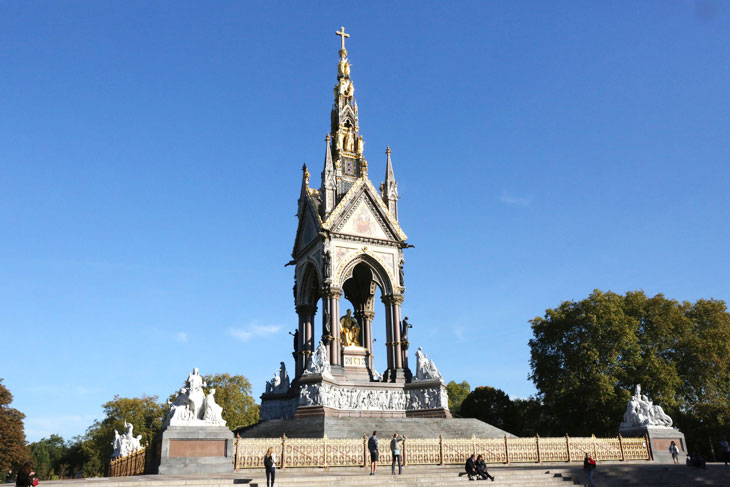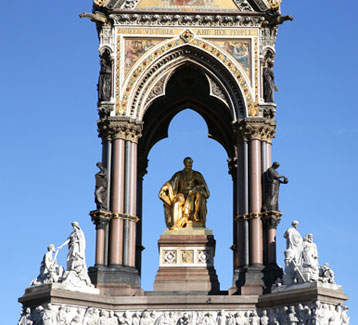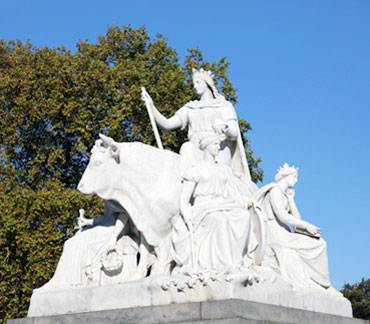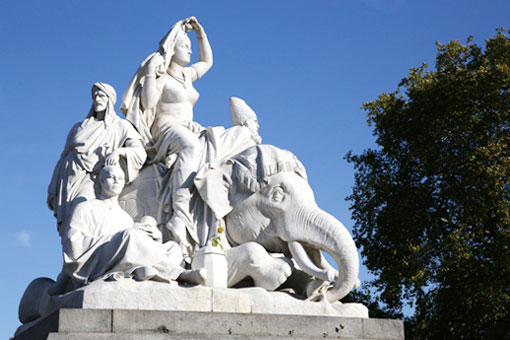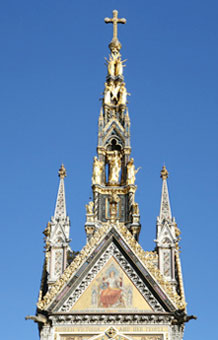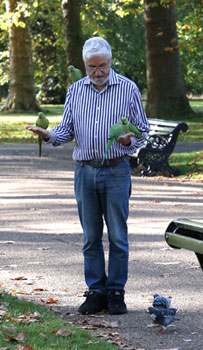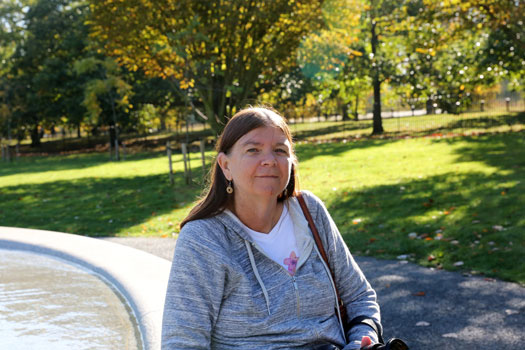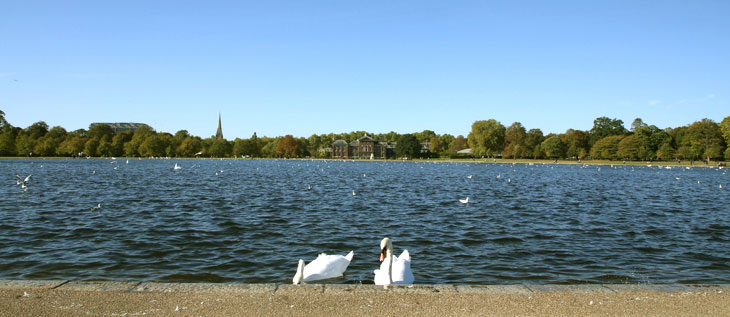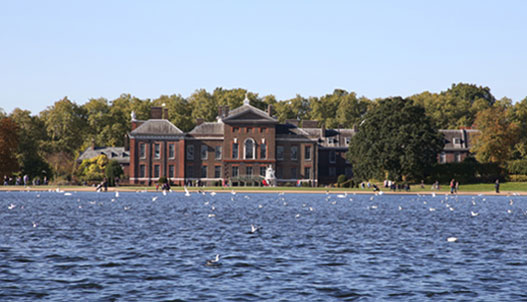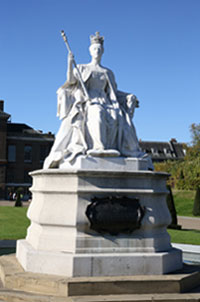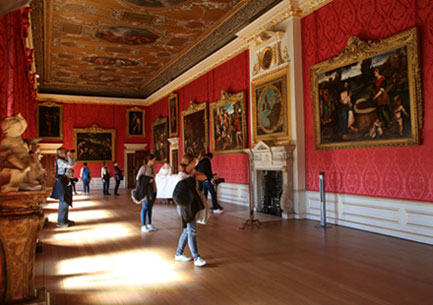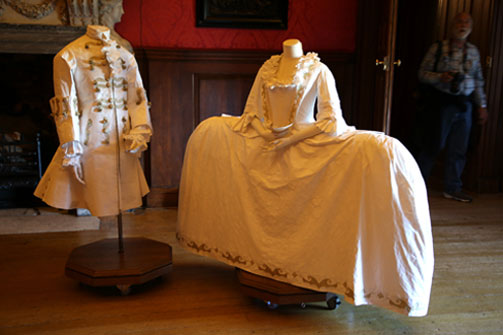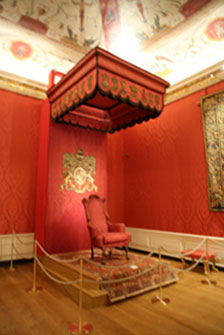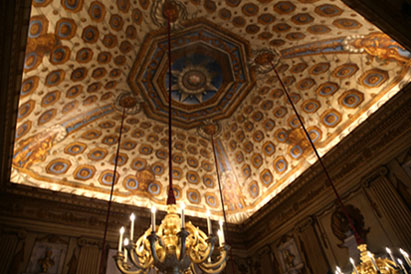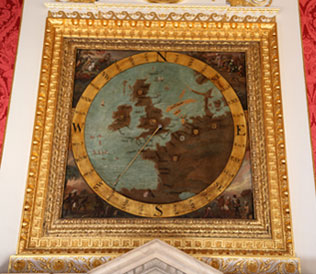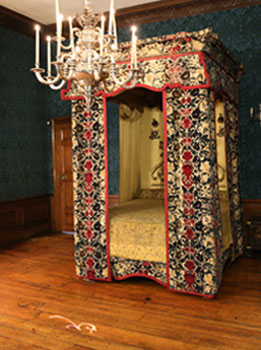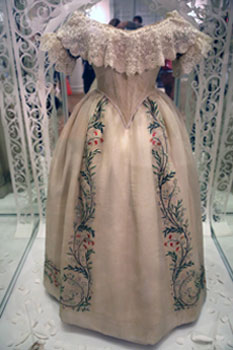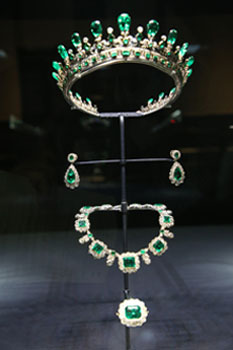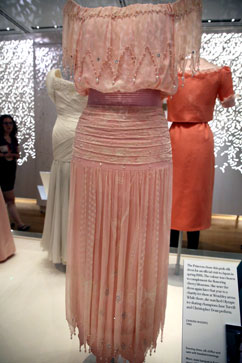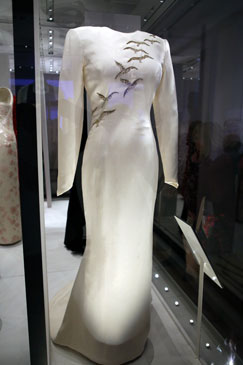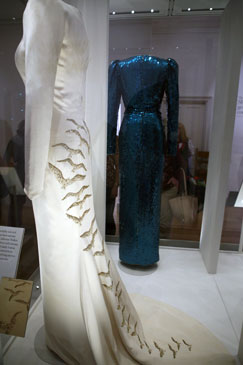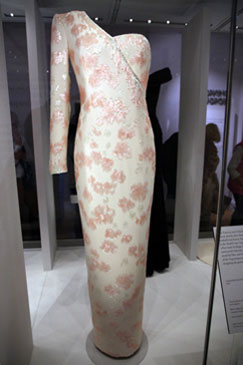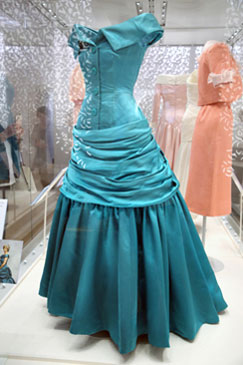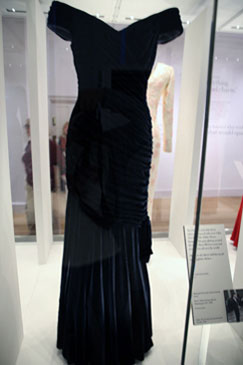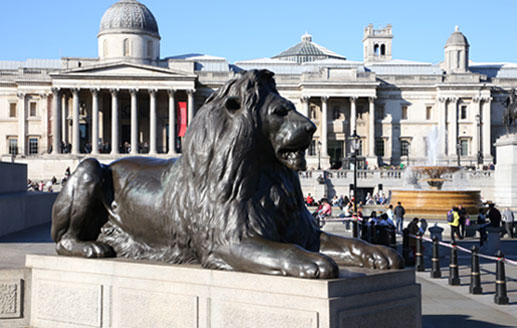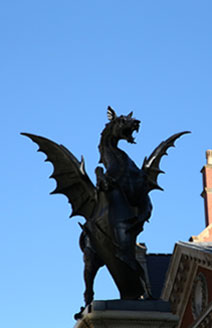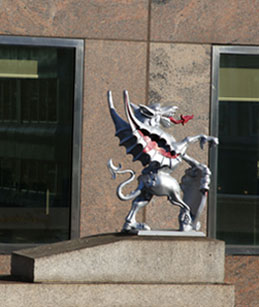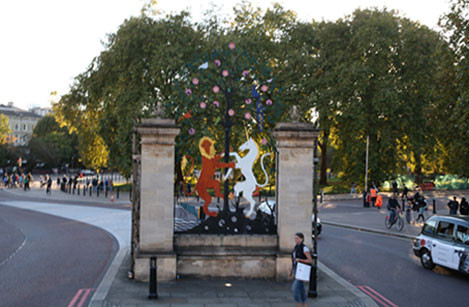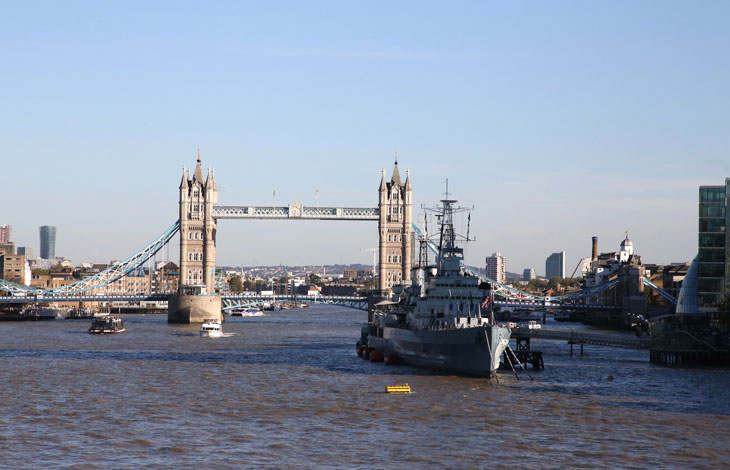Childhood Dreams
Kensington Palace and the Hop On Hop Off Bus Tour
The days flew by as they always do on trips, and suddenly it was our last day in London.
After breakfast we took a final stroll up the street to Hyde Park and Kensington Gardens. I wanted
to take some better pictures of the Albert Memorial and to find the Princess Diana Memorial Fountain
which had eluded us on our previous visit. The weather was perfect, and the Albert Memorial was as
impressive as ever.
Prince Albert's many interests are represented in various sections of the monument. There are 4 large
marble groupings representing manufacture, commerce, agriculture and engineering, and 4 others representing
Europe, Asia, Africa, and America. A frieze at the base depicts 187 artists, musicians, poets, and architects.
The statue of Albert beneath the canopy holds the catalogue of the Great Exhibition of the World of Industry
of All Nations held in 1851 and looks toward the Royal Albert Hall just outside the park.
After taking a suitable number of pictures, we managed to locate the Princess Diana Memorial Fountain, and
on the way there we found this man who was communing with what seemed to be wild parrots living in the park.
The fountain is a sort of raised channel in the shape of an oval that surrounds a grassy island. The stream bed
ranges from 10 to 20 feet wide, and it has textured sections which change the appearance of the flowing water.
It is situated on a gentle hill, and the water, which enters at the highest point, flows down in both directions.
The architects, Gustafson Porter + Bowman, have said,
"The design expresses the concept of 'Reaching out-letting in', taken from the qualities of
the Princess of Wales that were most loved; her inclusiveness and accessibility."
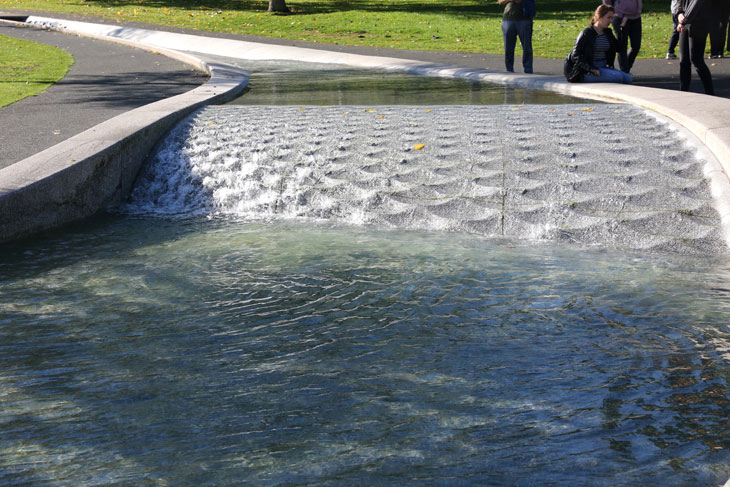
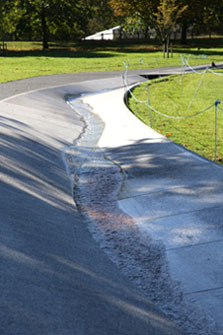
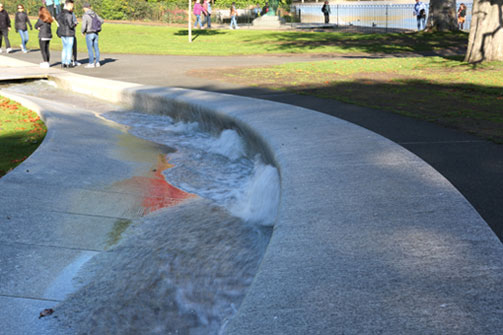
Then we walked across the park to Kensington Palace, birthplace and childhood home of Queen Victoria, and the
present home of the Duke and Duchess of Cambridge and their children. A large circular pond populated by
numerous ducks, swans, and other waterfowl sits in front of the palace. It was a pleasant place to sit and rest
for awhile after our long walk across the park. There is also a statue of Queen Victoria in her coronation robes
that was designed by her daughter, Princess Louise.
Inside, we climbed an ornate staircase to "The King's State Apartments". These apartments served as the courts
of George I and II in the 18th Century.
We also visited "The Queen's State Apartments in the oldest part of the palace where Queen Mary II lived in the
17th century. The jewels were designed by Prince Albert for his wife, Queen Victoria.
I was surprised to discover that what I enjoyed most at the palace was an exhibit entitled "Diana: Designing
for a Princess". The exhibit began with a somewhat sassy quote from Diana:
Sometimes I can be a little outrageous, which is quite nice. Sometimes.
I had never really thought about the impact that the fashion choices of people in the spotlight could have
until the seemingly clueless FLOTUS wore a jacket with the words "I REALLY DON'T CARE. DO U?" when she visited
children who had been separated from their families by the administration's callous "zero tolerance" family
separation policy at the Mexican border. Months had passed, but I was still irritated by her
insensitivity.
Contrast that jacket sentiment with this quote from Fashion Designer, Jasper Conran:
Whenever the Princess discussed her clothes with me, part of it was always, "What
message will I be giving out if I wear this?" For her, that became the real language of clothes.
The crowd moving slowly and reverently past the garments on display was almost entirely female. I
overheard snatches of conversation - women speaking of Diana in tones of awe and respect. I
had been wrapped up in my own life when Diana's every move had filled the airwaves, but now I also
began to feel a deep sense of admiration for the woman.
Signs explained that she wore the pink silk dress on an official visit to Japan in the spring of 1986.
She chose the color to complement the flowering cherry blossoms.
She wore the exquisite white gown on an official visit to Saudi Arabia. It is adorned with falcons, the national
bird, and features a high neckline and long sleeves as a sign of respect for local customs.
The gown on the left below was worn in Brazil shortly after their national football team lost to Argentina
in the World Cup. For this occasion, Diana asked the designer Catherine Walker to avoid the colors blue and white
- the team colors of Argentina.
She also used her celebrity to promote British fashion. The turquoise gown and the black one were designed by
Victor Edelstein, one of London's top designers at the time.
This sign from the exhibit pretty much sums it up.
Diana, Princess of Wales, was one of the most famous women of the 20th century. She combined the
allure of royalty with the fascination of international celebrity, and the press commented on every detail of her
life and style. The Princess crafted her public image carefully and soon learned how to use it to engage and inspire
people all over the world.
I left the palace with a newfound respect for Princess Diana.
We've never had much luck with Hop-On Hop-Off buses, but we were tired of walking so we decided to take a chance and
hop on one again. We sat on the upper deck snapping pictures as the bus crawled through traffic and listened as our
guide told us repeatedly that she was German and that living in London was very expensive.
There is a picture of our guide below. I think most of the other pictures were taken around St. Paul's Cathedral.

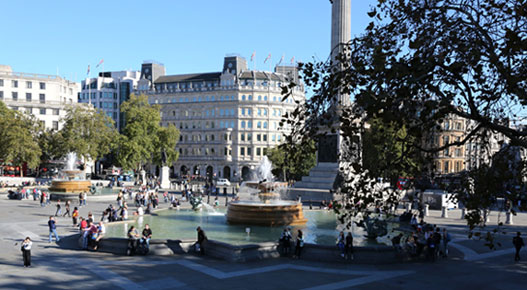
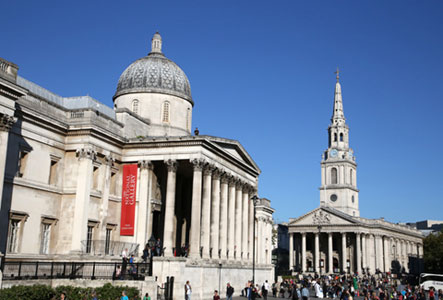
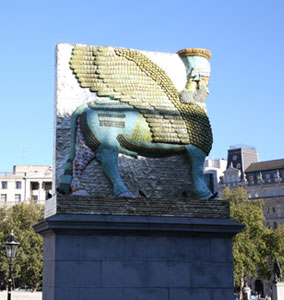
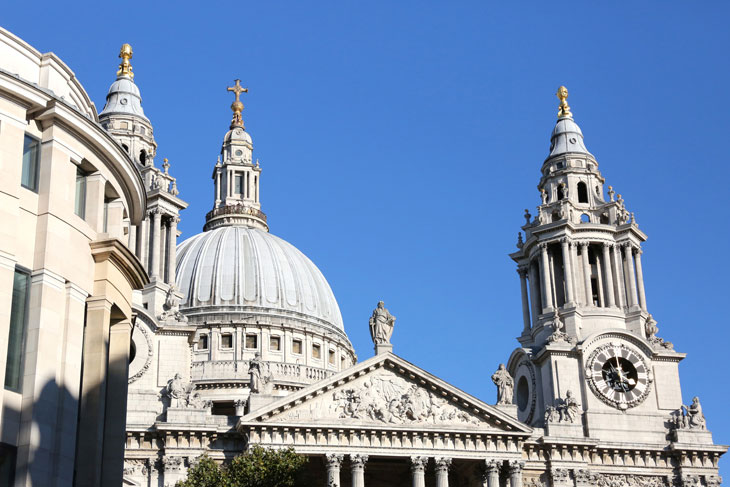
One thing I do remember from the tour, besides the fact that living in London is very expensive, is that there are
several dragon statues which mark the boundaries of the city of London. We passed 2 of them. The lion and the unicorn
adorn the Queen Elizabeth Gate at Hyde Park Corner.
I'll end with one one final picture of Tower Bridge.
As I said in the beginning, it took me awhile to fall in love with London, but now I was smitten.
